
Most of people don’t know that almost 50% of the stars in the night sky are double stars or multiple stars.
Double stars can either be stars which seem very close to each other due to an alignment effect from the Earth’s point of view, or which are really linked to each other by the gravitation. These binary stars orbit around their common centre of gravity.
They are the most interesting double stars since their position in relation to each other can change over time. Some of them are visible to the naked eye from Earth, but most require a telescope.
The larger your telescope, the more you will be able to distinguish these double stars. We name this the power of separation. Some double stars are so close that even with the largest telescopes on Earth, they cannot be distinguished individually.
Some double stars can look like a egg-shaped star if they are really very close to each other. Others are fairly easy to distinguish and often differ in their brightness or color. For these close doubles stars, you will need to use a fairly large magnification, around X100 if possible or more.
5 famous double stars to observe in the night sky
1) Mizar and Alcor
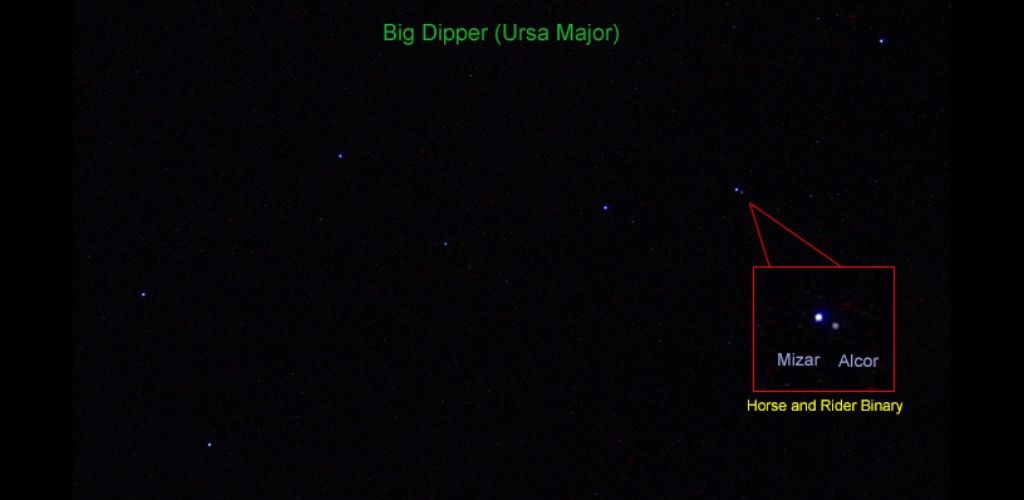
How to find this double star: Mizar and Alcor form the star in the middle of the handle of the famous Big Dipper. Look closely and you will see that there are actually two stars.
The two stars that make up this pair have separate names, which is unusual for double stars. It is also a very good eye test as you should be able to see them with the naked eye without being helped by any telescope or binoculars.
Also called “the Horse and Rider”, this double star is interesting for several reasons: not only is it a visible binary star, but it is also a multiple system which contains six stars.
This system is located approximately 83 light years from Earth. Mizar and Alcor are separated by 1.1 light years.
2) Winnecke 4 (M40)
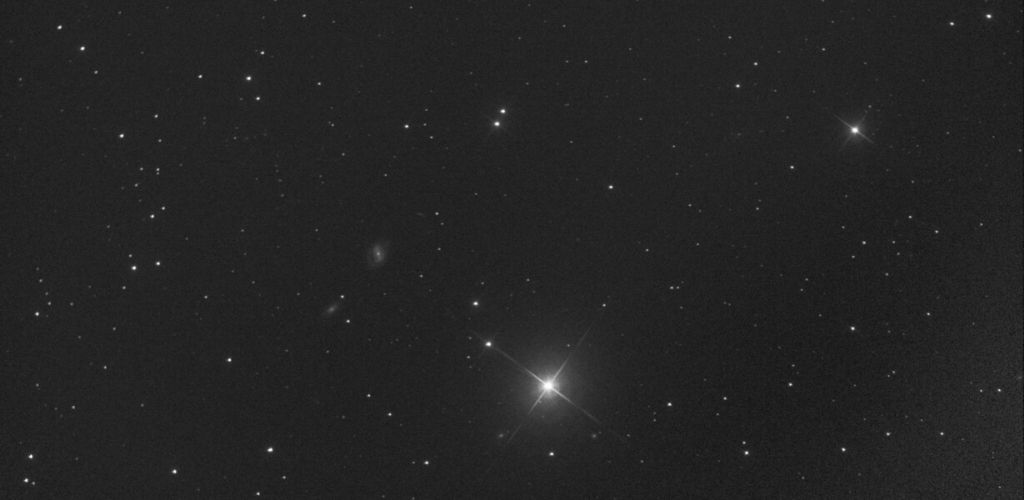
How to find this double star: Winnecke 4 is located above Megrez, which makes the connection between the bowl and the handle of the “big saucepan”.
In 1764 Charles Messier was looking for a nebula in the Big Dipper constellation, but he never found it. Instead, he discovered a double star and cataloged it.
Also known as Messier 40, this celestial object generated a lot of confusion because some people thought that Messier had made a mistake by listing it as a double star.
Recent observations suggest that it is a double optic rather than a true binary star. These stars are too weak to be seen with the naked eye and require a telescope.
Winnecke 4 is located 510 light years from Earth.
3) Epsilon Lyrae
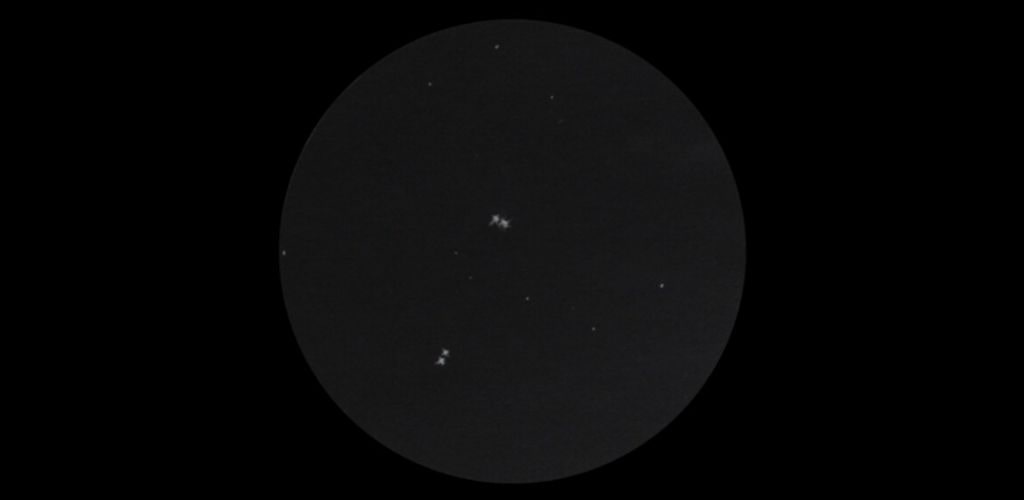
How to find this double star: Epsilon Lyrae is located near the bright Vega in the Lyra constellation. You can see it just above the diamond that forms the main part of the constellation.
Another popular and famous double star, Epsilon Lyrae is a “double double star”. Each star is a double star. It is therefore a quadruple star system.
Thanks to binoculars, it is easy to see a pair of stars, but you will need a medium-sized telescope to be able to distinguish the other two stars that make up Epsilon Lyrae.
The main stars are about 162 light years from us and orbit each other. They are so far apart that it takes hundreds of thousands of years to complete an orbit.
4) Almach
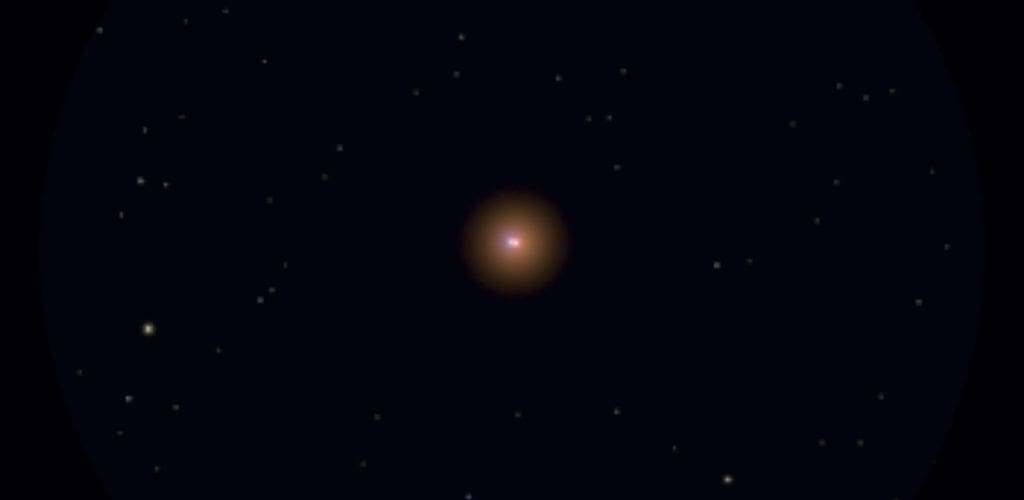
How to find this double star: Almach is the star to the left of the Y shape of the Andromeda constellation. You can see it better during the fall months.
Almach, also called Gamma Andromedae, is another pair of contrasting stars, gold and blue in color. It is not as well known as Albireo, perhaps because the stars that compose it are too close and therefore more difficult to see as separate stars.
However, it is a beautiful double star which, like Epsilon Lyrae, is actually a quadruple system, but these stars are too close to be seen individually. This pair of stars can be easily separated using a medium sized telescope of moderate power.
The colors of Almarch are quite amazing and well worth the time spent finding them.
Almach is 355 light years from Earth.
5) Albireo
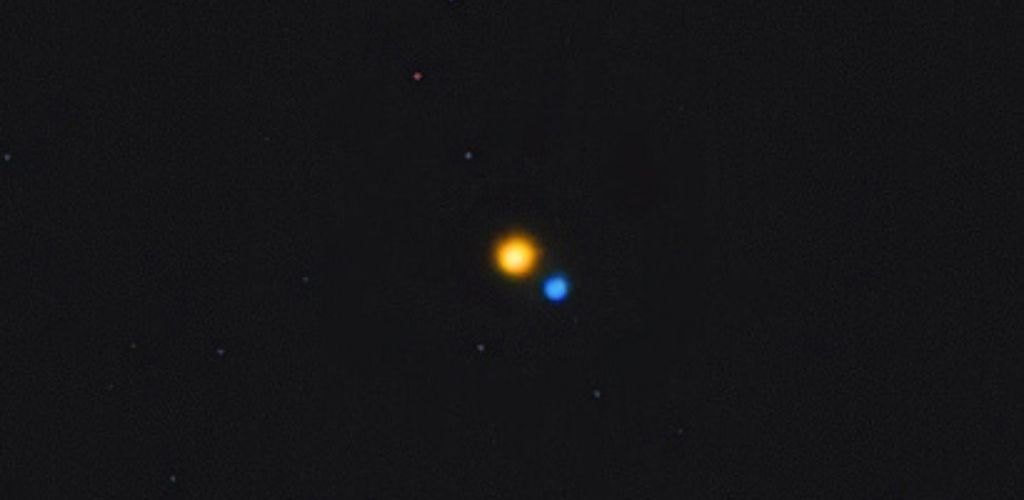
How to find this double star: Albireo is the star which marks the head of the swan in the Cygnus constellation. It is best seen in summer, when it is high in the sky.
This beautiful double star is easy to see with binoculars or with a small telescope. The brightest star in the pair is golden yellow in color and contrasts with the weakest, bluish, which offers a beautiful set of colors.
It is probably the most popular double star to observe in the night sky because it is easy to find thanks to its contrast. We don’t know yet whether these stars orbit one another.
Albireo is approximately 385 light years from us.
Understanding the interaction between binary stars
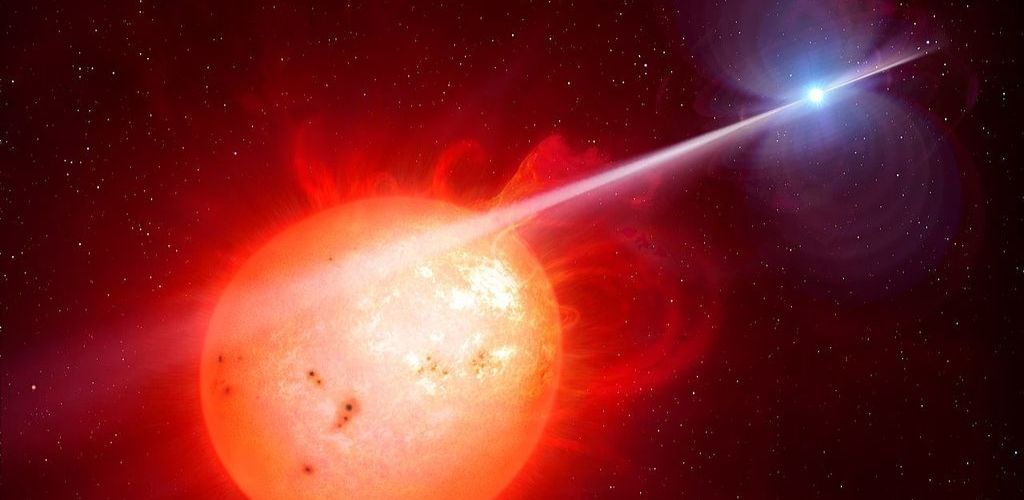
Artist’s impression of a binary star
There are binary stars (two stars that orbit around their common centre of gravity) that can interact physically. They often have very close orbits and are generally formed by a red dwarf whose matter is attracted by a white dwarf. This matter forms what is called an accretion disk around the white dwarf. The matter then falls to the surface of the white dwarf.
Because of this interaction, these stars vary in brightness because the matter of the ordinary star will crash into the white dwarf and cause brightness enhancements at irregular intervals caused by the nuclear fusion reactions due to the conversion of the hydrogen into helium at a very fast rate.
We know that these stars have an intense and complex magnetic field around them. They are also often the source of nova, stars whose luminosity will suddenly increase a hundredfold. If these stars are massive enough, this kind of interaction can trigger supernova explosions.

- Images credits:
- Mizar and Alcor: Shawngano at en.wikipedia / CC BY-SA (http://creativecommons.org/licenses/by-sa/3.0/)
- Winnecke 4 (M40): www.asso-sterenn.fr
- Epsilon Lyrae: Janusz Krysiak/Astronomy Sketch of the Day
- Almach: Roberto Mura / CC BY-SA (https://creativecommons.org/licenses/by-sa/3.0)
- Albireo: Hewholooks / CC BY-SA (https://creativecommons.org/licenses/by-sa/3.0)
- Interaction between binary stars: M. Garlick/University of Warwick/ESO / CC BY (https://creativecommons.org/licenses/by/4.0)